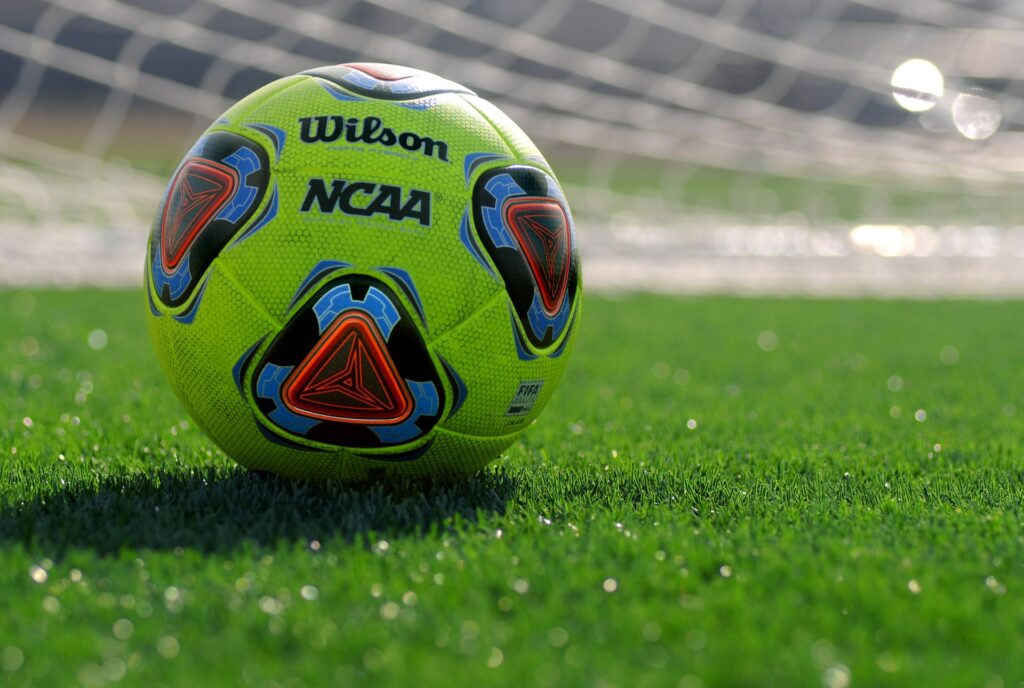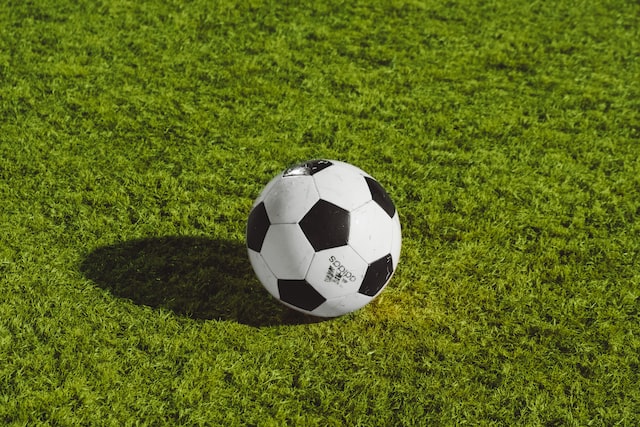*Our published content contains affiliate links that may lead to a small commission. Full disclosure here.
Think back to some of the greatest goals that you’ve witnessed either from the comfort of your sofa or from your seat in the stands. You’ll likely be able to recall the finer details of your favorite ones, from the timing of the crowd’s roar to the length of the celebratory knee slide.
Another facet that might remain fresh in your mind is the color of the ball which lands in the net.
Despite these soccer balls being part of such lasting images in our minds, you may rarely wonder why soccer balls are the colors they are? Well, there’s more logic than you’d perhaps think behind the changes to the ball colors and designs over the years.
What color is a soccer ball?
Soccer balls are mostly white, or at least a color deviating from white slightly.
You might see some with black panels on them, but their primary color is usually white. Depending on the brand of ball you buy, the patterns and designs can vary.
Orange and yellow soccer balls are also used professionally, but they tend to be reserved for circumstances that we will explain later.
However, you will probably find balls of all colors available online, despite many of the colors that are for sale not being used at elite-level soccer.
Why is a soccer ball white?
Before games were televised regularly, soccer balls used to be brown and made of leather. They were rarely designed with any interesting patterns, and you’d be forgiven for confusing them with models from decades before.
When black and white televisions became more frequent in homes, organizers felt that black and white balls would be easier to see on TV screens. The 1970 World Cup was, therefore, one of the first instances we saw these white balls with black pentagons, and they were to become a hallmark of the game.
Eventually, color TV became the norm, so there was no need to include the black pentagons on the balls anymore, hence why soccer balls used in most professional leagues are just white. Some leagues continued to use the black-paneled balls, however, as they’d become part of the fabric of soccer.
Some manufacturers still make soccer balls with black pentagons on them as there are people who favor this design, and tradition generally, over the newer models.
When can you use a yellow soccer ball?

Yellow soccer balls tend to be used in the winter months.
Some leagues, like the English Premier League, might adopt yellow balls throughout the winter period as standard when visibility is more likely to be a problem.
Fog, for example, is one of the reasons we see yellow balls used.Players feel that floodlights, which are used more frequently in winter periods, make a white soccer ball harder to see in the air; a yellow soccer ball can help prevent such issues.
When can you use an orange soccer ball?
It’s most likely that you’ll witness an orange soccer ball being used when there is snow or sleet.
Inclement weather is likely to affect both the spectacle for fans, so using an orange ball makes the job of the soccer players easier.
Of course, you won’t find too many elite-level pitches covered in snow nowadays, thanks to the near-exclusive installation of undersoil heating. However, some organizers feel that yellow balls aren’t quite distinctive enough in the snow and could jeopardize the game’s quality and spectacle.
Who decides on the color of the soccer ball to use?
Ultimately, the decision of the ball color is made by the league’s governing body. There is often approval granted by the governing body for the manufacturer to make the balls in agreed colors for certain dates.
Which game-week the winter balls are introduced into a season is up to the league and its schedulers, but it often coincides with the clocks going back in Fall.
Organizers, however, make mistakes too. There was an instance in Spain where the La Liga authorities were forced into an embarrassing U-turn as players and fans alike complained that it was too difficult to spot the winter ball that the league introduced, which was an odd shade of red.
The Puma soccer ball was used for one weekend before the league took action by stating it would only be used in snowy conditions going forward.
Color blindness in fans and players alike, which is relatively common, remains a consideration in the kit choices of players, but the ball color selection is just as important.
The FA made the error of opting for pink balls in the 2014 edition of the FA Cup, which were terribly difficult for many color-blind people to see against the grass. Thankfully, we encounter fewer of these issues each year as awareness grows.
Where can I buy different colored soccer balls?
Of course, manufacturers know that these days, the soccer ball industry is a lucrative one, so the balls used in major club and international tournaments don’t come cheap.
Thankfully, there are countless other balls of high quality that you can purchase online.
You can find various colors of soccer ball online made by every major sports brand who are involved in soccer. Here are two models available in a selection of colors online:
Mitre Impel training ball

Available in several attractive colors and featuring a 30-panel construction, the Mitre Impel training ball is a great option for soccer players of all ages and is available for a great price. Buy Now.
Adidas Unisex Adult MLS Training Ball

As an official training ball of the MLS, this is a great option for soccer sessions out on the practice field, or for your amateur team’s weekly matches. After all, you can’t go wrong with Adidas! Buy Now.
Recap: Soccer ball colors explained
Which soccer ball will be used in the professional game depends on several factors, including the time of year, the manufacturer contracted to supply the soccer balls, and the weather conditions on any given matchday.
There are so many to choose from online that you might feel spoilt for choice. When purchasing, just bear in mind the conditions that you are likely to play in make a big difference to which soccer ball is the right one for you.
Keen to learn more about soccer balls? Check out our recent posts on soccer ball sizes and the use of old leather soccer balls for more insight!

